#and hopefully people learn new things about Australian archaeology
Explore tagged Tumblr posts
Note
Top 5 archaeological sites in Australia that you feel people should know more about? Or top 5 Australian artefacts?
I feel like I’ve talked a bit about artefacts in a few recent asks, and also I feel like a lot of Australian archaeology (and as such, sites) are very underrated, particularly on a global scale. Its often acknowledged in Australian archaeology that getting international academia to recognise the importance of our country’s archaeology is very very difficult.
While there’s a million and one sites I’d love to talk about, I’m going to TRY and give sites that relate to different aspects and locations
This is probably going to be long, so...
1. Nauwalabila, Madjedbebe (Malakunanja II), and the Deaf Adder Gorge region, Northern Territory (Aboriginal)
Rock shelters in this region, and specifically Madjedbebe, are currently the oldest location of human habitation in Australia. Dating evidence from 2017 excavations provided an estimate of earliest occupation of 50 000 years at certainty, possibly extending back as early as 65 000 (+/-6000). It also has provided a lot of evidence for research into the extensive grind stone technologies of the Pleistocene.
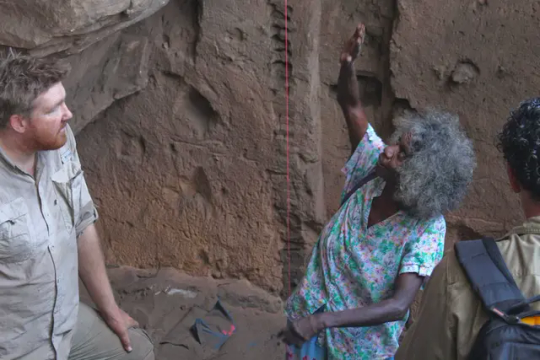
2. Cloggs Cave and the Buchan region of the Victorian Gippsland (Aboriginal)
So much research has been done into this region in various ways. Josephine Flood focused her research on Bogong Moth usage (and festivals) within this region, providing some of the earliest accepted academic research in support of Aboriginal peoples’ claims of large scale Bogong Moth Festivals in Australia’s highlands (although the fac that no one really believed communities until then…………..). In 2021 grind analysis found Bogong Moth residue, making this the earliest stone artefact with evidence of insect food remains. And in addition to that recent 2017 research in the area investigated Holocene occupation with Aboriginal community members, with a focus on understanding the interaction of spirituality with the resources found in the caves.
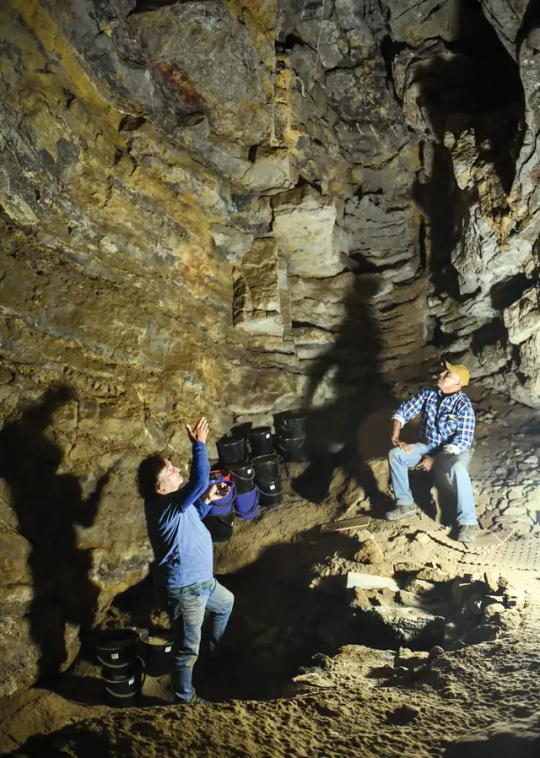
3. Mabuyag Island, Torres Strait Islands, Queensland (Torres Strait Islander)
Mabuyag Island (alternatively known as Mabuiag or Mabuyaagi) has archaeological evidence of human occupation since 7300 years ago. The island is both associated with recent religious practices associated with he heavy processing of dugong remains, and totemic associations with these, which played a role in early 2000s into community lead and directed archaeological research into ritual and religious traditions and practices. In addition to this, Mabuyag is the location of the first archaeological excavations in Australia to find pre-colonial pottery fragments. The fragments at the two sites on the island were associated with Melanesian and Papua New Guinean pottery trade. The excavations relating to pottery on the island played an important role in our understanding of domestic and international trade in pre-colonial Australia, and also formed an influence for the recent excavations at Lizard Island, 300km south, which identified the first datable domestically made pottery technology found in Australia.
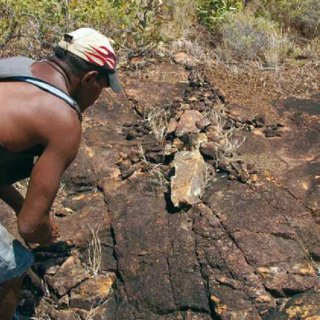
4. Hyde Park Barracks, Sydney, NSW
Hyde Park Barracks is part of a collection of colonial heritage structures in Australia, relating to Australia’s time as a penal settlement. Hyde Park Barracks in particular were the location of the housing of convict men from 1819 to 1830, with the 1830s to 1840s also involving the site being a location of additional convict punishment, and the base for the Board of Assignment of Servants. Following on from a reduction of convicts to NSW in the 1840s, the Barracks became the Female Immigration Depot, and the Orphan Institution, later becoming the Asylum for Infirm and Destitute Women.
This time period of women’s occupation provides some of the most interesting archaeological remains, as redevelopment and management of the site has found high rates of preservation within walls, and in areas below floorboards. This includes textiles and fabrics, papers, and other non-organic materials such as pipes (with their tobacco intact) stashed in what was once floor, wall, and ceiling cavities. Archaeological investigations in the area form one of the most detailed assemblages of artefacts relating to instituted women in the British Empire during the 19th century.
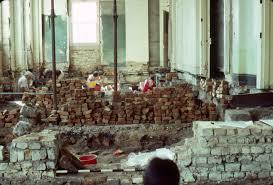

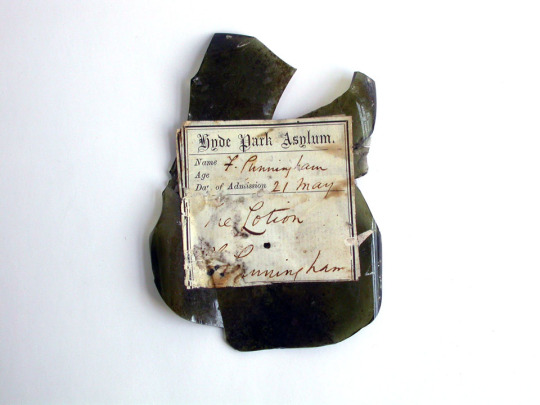
5. Notch Point, Western Australia (Multicultural heritage)
Notch Point is a site of varied and mixed archaeology, ranging from pre- and post- colonial period Aboriginal heritage, to diverse 19th century occupation of the region by Chinese, European, Malay, and Aboriginal peoples in association with pearling industries off the coast. In addition to this, the point is located on Dirk Hartog Island (otherwise known as Wirruwana), the site of the earliest European arrival in Western Australia in 1616, and contains archaeological evidence of both various early Dutch interactions with the island in 1616 and 1697, as well as French arrival in 1772, 1801, and 1818. Notch Point in particular also contains evidence of conflict between the predominantly Chinese population of the pearling industry, with white-Australian and European pearling masters, and pastoral agents. Its not a site that is widely discussed, but provides a fascinating overlay of the amount of varied cultural groups that can be present within Australia’s archaeological sites.

-
-
Honourable mentions to:
Lake Mungo and the Willandra Lakes which should 100% be on this list, but also I feel like I talk about it ALL the time and I wanted to mention sites that I actually don’t see discussed a lot. Theyre super important for cultural reasons, for archaeological reasons, and also for their role the development of archaeology, Aboriginal community consultation, and the role its played in developing repatriation practices in modern Australia. I have multiple posts about them HERE
Budj Bin Eel Traps in Victoria (same reasons, I’ve definitely talked about them before).
Juukan Gorge (and its destruction, im still horrified)
Harrietville Chinese Mining Village
Strangway Strings and The Peake Afghan Cameleer sites
Recherche Bay in Tasmania, and its 1792 French settlement sites
Homebush Mill & Mission Hall in QLD and Beowa National Park sites containing South Sea Islander heritage
#I feel like this constitutes a solid answer#i had fun#and hopefully people learn new things about Australian archaeology#and its diversity#sorry this took literally forever to answer#i got sick for a bit#and then its going to chill in my queue for a couple of days#archaeology#Australia#aboriginal and torres strait islander peoples#they let a mouse do archaeology?#Mice answers things
73 notes
·
View notes
Text
Significant Indigenous Australian Rock Shelter Blasted for Money? More Likely Than You Think.
https://www.abc.net.au/news/2020-05-26/rio-tinto-blast-destroys-area-with-ancient-aboriginal-heritage/12286652

I would first like to begin by acknowledging and paying my respects to the Ngunnawal people, the Traditional Custodians of the land on which I am communicating to you from today.
I would like to pay my respects to their Elders, past, present and emerging, and acknowledge all Aboriginal and Torres Strait Islanders reading today, also paying my respects to your Elders, past, present and emerging.
In 2013, permission was signed off for Rio Tinto to detonate mining explosives near the Juukan 1 and Juukan 2 rock shelters in the Western Pilbara, Australia. Archaeologists have surveyed and excavated much of the sites, and through sweat and tears (and negotiations with local Elders) have turned up a plethora of breathtaking artefacts and paintings, digging up lost connections from ancestor to local. Recently, the action was passed and these two fantastically large, rich in local and historical importance rock shelters were abslolutely crumbled to dust by the distant explosion.
What is most frustrating about this, is that through negotiations of the mining operation (in 2013!!! We had time to avoid this!!!!) acknowledgement of damage of these sites was taken into consideration and simply ignored (see the article link above).
As an Australian, I am angry. As an archaeologist, I weep.
If you don’t know much about Australian history, I’ll give you the low-down (which feels almost criminal because our history is too rich to put into mere dot points, but for the sake of brevity I will highlight what is important to my ranty rant);
Aboriginal Australians are thought to have arrived on the Australian continent 40,000-70,000 years ago. The reason this bracket is so large, is because artefacts are scarce and generally, the further you go back the harder it is to pin-pont.
We have some fantastic early examples of stone tool use, craft and community engagement displayed through artefacts found near Indigenous settlements. These artefacts are distinct from other upper/middle paleolithic sites, as the technology to make them are pretty much unique to the Aussie continent and thus require unique methods of analysis to catalogue and understand.
Because of the nomadic lifestyles of very early Indigenous people and the arid conditions of many parts of Australia, these artefacts are rare to find whole (comparing to other upper/middle paleolithic sites) and thier availability will only decrease the further we go through time.
750,000+ indigenous Australians inhabited the Australian continent when European settlers (namely the British) arrived in 1770 (see helpful sites at the bottom). They promptly screwed things up - and there’s a lot of information on that available in the links below.
In 1900, there was an estimated 117,000.... A loss of over 84%. Let that sink in.
Today, we have some great legislation surrounding protection of heritage sites, but as it turns out, they aren’t as concrete and valued as we once thought (someone doing heritage law, I’d appreciate your input here).
Indigenous Australian archaeology is fascinating and so very important for many reasons, most of all because it is rare, and because we do not fully understand it yet. There is a deep, deep, rich culture that invigorates our land, and mining corporations like Rio Tinto are (quite literally) burying it in the sand. Our government is equally to blame, if not more, for letting this happen. The local community and Elders of the Puutu Kunti Kurrama (PKK) people are just devestated that a site so significant to their history and a direct connection to their ancestors has been flicked away by money-hungry coorporations. This isn’t the first time this has happened, and it won’t be the last. I’m just so angry. And shameful to be living in the capital city where this shit is happening right under my feet. I’m not sure why I needed to write all of this out... I suppose it’s a cry for help, a call for recognition. I don’t really want to bring events like the burning of Notre Dame in and compare it, saying someone’s loss is greater than another’s but I’d like to use it to strengthen how important this site is for the PKK Community. It’s the same shit. Just less publicity. Just less white.
NEGOTIATE BETTER. TALK WITH THE ELDERS. And once you’re done talking, LISTEN. L i s t e n .... Please. If consideration for Indigenous community opinion was as important as we make it out to be, these sites wouldn’t be anywhere near the firing line. I wouldn’t decimate your ancestral home, so don’t bloody decimate theirs.
Sort of feels like I’m doing an academic paper (or academic rant) here so I’ll slap on my website references, so you can go read ahead, and hopefully understand what the fuck is happening in my country (because I sure don’t).
I’ll also clarify that I am white, and I recognise my privelage and I’m also doing what I can as an archaeology student to better understand my country and the beautiful * chef’s kiss * culture we are striving to preserve and grow. If you’re not Aussie, and any of this is confusing, please check out the links below, do your own research, or contact me, I’d be happy to learn with you.
Much love (and crank), Your friendly (and angry) Australian archaeologist.
Helpful sites: https://www.creativespirits.info/aboriginalculture/people/aboriginal-population-in-australia
https://australianstogether.org.au/discover/australian-history/colonisation/
https://australianmuseum.net.au/learn/cultures/atsi-collection/australian-archaeology/
https://link.springer.com/chapter/10.1007/978-0-387-35263-3_1
#australia#australian archaeology#archaeology#archeology#indigenous#indigenous australia#australian politics
1 note
·
View note